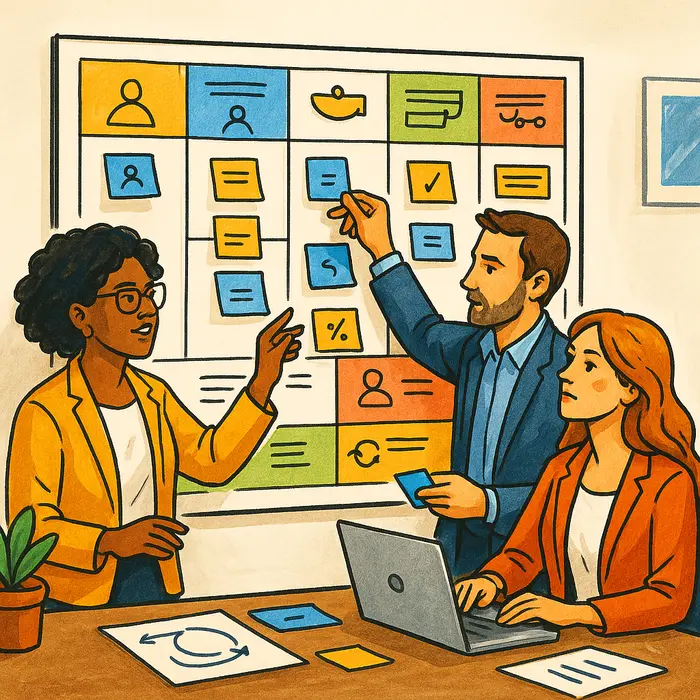Sometimes, strategy feels too abstract. Too high-level. Too theoretical.
The Business Model Canvas changes that. It turns strategy into a simple, visual tool you can use in real time—whether you’re exploring a new idea, analyzing a competitor, or rethinking your company’s direction.
In this post, we’ll walk through how to use the Business Model Canvas as a practical tool for analysis, planning, and collaboration.
What Is the Business Model Canvas?
It’s a one-page framework that outlines the key elements of how a business creates, delivers, and captures value.
Developed by Alexander Osterwalder, it helps teams:
- Visualize a business model quickly
- Identify gaps or weak links
- Brainstorm and test changes
- Communicate strategy clearly
The 9 Building Blocks
The canvas is divided into nine sections:
- Customer Segments – Who are your key customers?
- Value Propositions – What problem do you solve for them?
- Channels – How do you reach and deliver value to them?
- Customer Relationships – How do you build and maintain relationships?
- Revenue Streams – How do you make money?
- Key Resources – What assets are essential?
- Key Activities – What must you do to deliver?
- Key Partnerships – Who helps you succeed?
- Cost Structure – What are your major costs?
How to Use It Step-by-Step
Step 1: Choose the Focus
Use the canvas to map:
- Your current business model
- A new idea or product
- A competitor’s approach
- A partner’s model
Be clear on what you’re analyzing.
Step 2: Print It Big (or Use a Digital Tool)
Use:
- Sticky notes on a wall for team sessions
- Tools like Miro, MURAL, or Canvanizer for remote work
Keep it collaborative and visible.
Step 3: Start with the Customer
Begin with Customer Segments and Value Propositions. These two are the foundation.
Ask:
- Who are our customers?
- What problems are we solving?
Step 4: Fill in the Rest
Work through the remaining blocks:
- Keep descriptions short and specific
- Use real examples, not jargon
- Identify assumptions vs. known facts
Step 5: Look for Patterns and Gaps
Once complete:
- Are your costs aligned with your revenue?
- Are there bottlenecks or missing pieces?
- What areas are based on guesses?
This helps prioritize what to test or refine.
Step 6: Test and Iterate
Use the canvas as a living document:
- Test changes in one area and see the ripple effects
- Involve different teams for fresh perspectives
- Update regularly as you learn more
Pro Tips
- Use color coding (e.g., green = confirmed, yellow = in progress, red = assumptions)
- Take photos of canvas versions over time to track evolution
- Use the canvas in early project planning, strategic reviews, and innovation workshops
Summary: See the Whole Strategy on One Page
The Business Model Canvas is more than a worksheet—it’s a conversation starter, a testing ground, and a visual map of your strategy.
It brings clarity to complex ideas and helps teams stay aligned as they build and improve.
Start simple. Keep it visible. And use it often.
